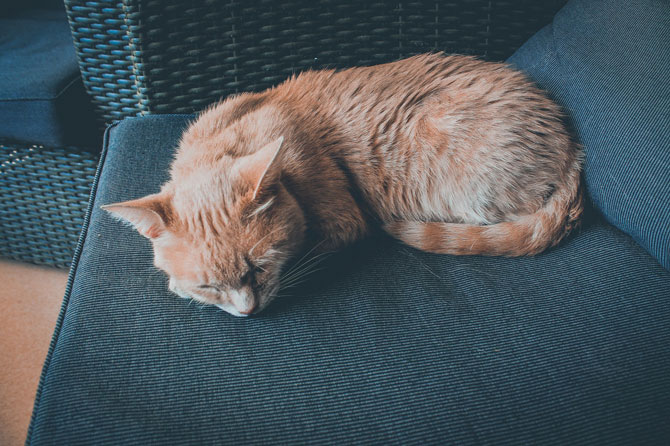Our feisty feline friends are known for their independence and also their aloofness. This can sometimes make it difficult to tell if a cat is sick. Furthermore, cats can tend to hide away when they’re feeling unwell, making it all the more tricky!
Nonetheless, there are certain signs to look out for that may indicate a cat is sick. Not only is it important that you know these signs, but it’s also something you can advise your clients on. Here are some potential telltale indicators that a cat is sick or feeling unwell.
Common signs a cat is sick
In some cases, only very subtle changes can indicate a cat is sick. Being mindful of these slight changes may assist you to take action before the cat gets very sick.
Increased vocalization
While cats can become more vocal as they age, vocalization changes can also be a sign of physical pain or discomfort. Additionally, increased vocalization may be an indicator of stress or boredom. Thus, it’s always worth ruling out any potential underlying illness or chronic disease.
Grooming habits
Cats love to groom themselves. So, if a cat that typically looks schmick suddenly stops grooming or starts to look unkempt this could suggest the cat is sick. A cat may stop grooming because they feel unwell, they are in pain or it’s simply too uncomfortable.
However, it’s not just under-grooming that’s a problem. A sick cat may over-groom too. Certainly, over-grooming may be a sign of anxiety, fear or stress. It can also be a sign of a skin reaction, such as feline military dermatitis or some other allergic reaction.
Changes in general behaviour
Personality changes can occur in cats over a long period of time. For example, humans can become senile with old age and so too can cats. Common behavioural changes in cats related to old age include wandering, meowing more consistently, disorientation, and social withdrawal.
However, if a cat that is normally quite sociable suddenly becomes quiet or solitary this could be a sign the cat is sick.
Changes in toilet behaviour
Aside from changes to their general behaviour, when a cat is sick you may notice changes in its toilet behaviour. This includes urinating outside the litter tray, blood in urine or faeces, diarrhoea and changes in the frequency of urination. Indeed, urinating more frequently may be a sign of a urinary tract infection.
Lethargy
If a cat that is typically active suddenly slows down or becomes lethargic this could suggest the cat is sick. It may be that the cat is temporarily feeling under the weather. However, it may also be an indicator of an underlying illness or disease, such as arthritis.
Weight loss or gain
If changes in weight happen without any major amends to the cat’s food intake, this should be investigated. According to Cats Protection UK, weight loss in older cats could be a sign of hyperthroidism. Yet, unexplained or sudden weight loss can also be a sign of gastrointestinal problems or intestinal parasites.
Changes in breathing
Shallow breathing, wheezing or excessive panting are all potential signs a cat is sick. Additionally, it’s worth checking to see if the cat appears to have difficulty sleeping or they are sleeping in an abnormal position. Consistent coughing or sneezing could also indicate a health issue.
Bodily discharge
Discharge located in the ear area could be a sign of an ear infection. Discharge from the nose or eyes may be an indication of a respiratory infection. A vet should check out these symptoms, particularly as they may also be contagious to other cats or pets.
Smelly breath
According to the RSPCA, an estimated 80 per cent of pets over the age of three suffer from dental disease. Therefore, just like humans, dental health is very important in cats (and dogs). If dental hygiene is not addressed it can lead to serious issues as a result of the bacteria spreading through the body.
It’s important to be aware that bad breath in cats can be a sign the cat is sick, It could be an indicator of a mouth ulcer, mouth sores, oral tumour or dental disease. Other signs to watch out for include drooling, blood, inflammation or discolouration of the gums.
As with most things, early detection generally leads to the best outcome. Therefore, being able to recognise early warning signs that a cat is sick can help ensure timely treatment and a positive outcome.
Image source: Unsplash.com
Latest posts by Liz Walden (see all)
- Pet health: Medicinal cannabis for pets - December 27, 2021
- What pet business insurance do I need? - November 17, 2021
- Pet sitters: how to take time off - November 15, 2021










Leave A Comment